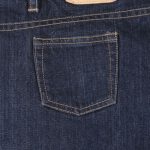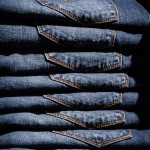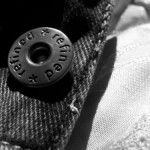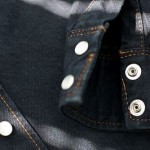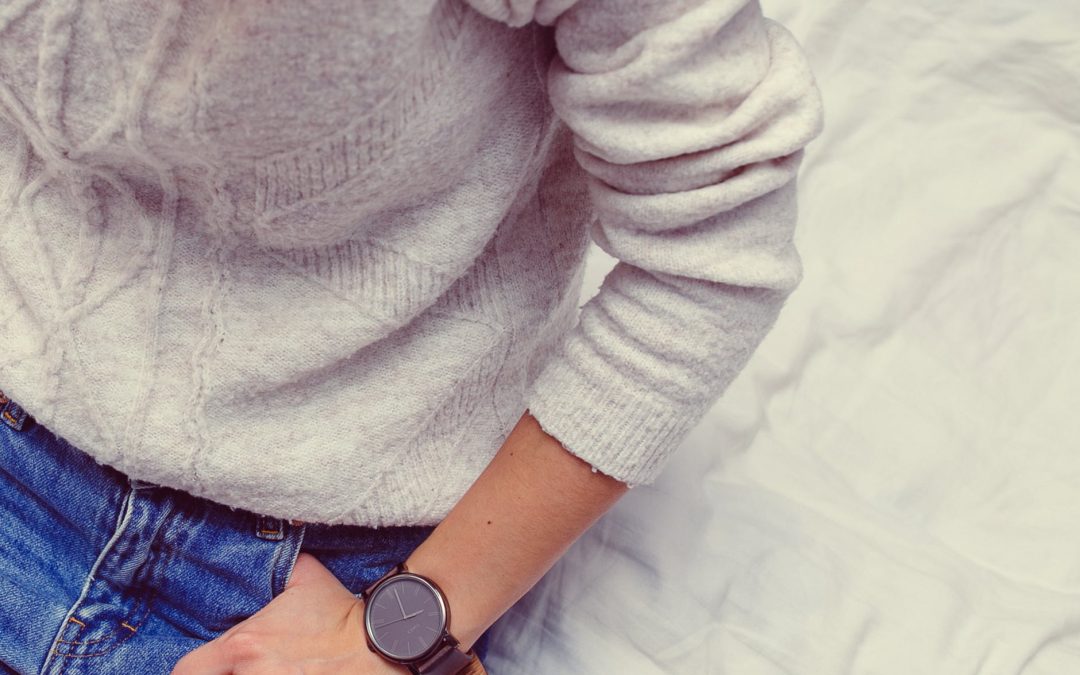
by MakeYourOwnJeans | jeans |
Have you discovered unsightly piles of lint stuck to your jeans? When initially manufactured, jeans shouldn’t have any lint. Over time, however, these fine strands of textile fibers can accumulate on the surface of your jeans. Lint won’t necessarily harm your jeans, but it can still affect the appearance of your jeans nonetheless. The good news is that you can protect your jeans from lint by taking a few precautions. Choose Jeans Made of High-Quality Denim If you choose jeans made of high-quality denim, you shouldn’t have a problem with lint. Lint itself is either comprised of textile fibers from other garments, or it’s comprised of denim fibers of the jeans. If your jeans are made of cheap, low-quality denim, the denim fabric will degrade more quickly, resulting in the accumulation of more lint. To avoid the hassle of cleaning lint off your jeans, choose jeans made of high-quality, durable denim, such as those sold here at MakeYourJeans. Cut Back on Washing Your Jeans How often do you typically wash your jeans? While washing is essential to cleaning and removing stains, you should use caution to avoid washing your jeans too frequently. The more you wash them, the greater the risk of lint. Each time you wash your jeans, the denim fabric will wear down a little more. It’s not a substantial amount of wear, but it can still cause small denim fibers to release from the surface of your jeans. As these denim fibers collect inside the washing machine, some of them will stick to your jeans to form lint. To protect your jeans from lint, consider washing...
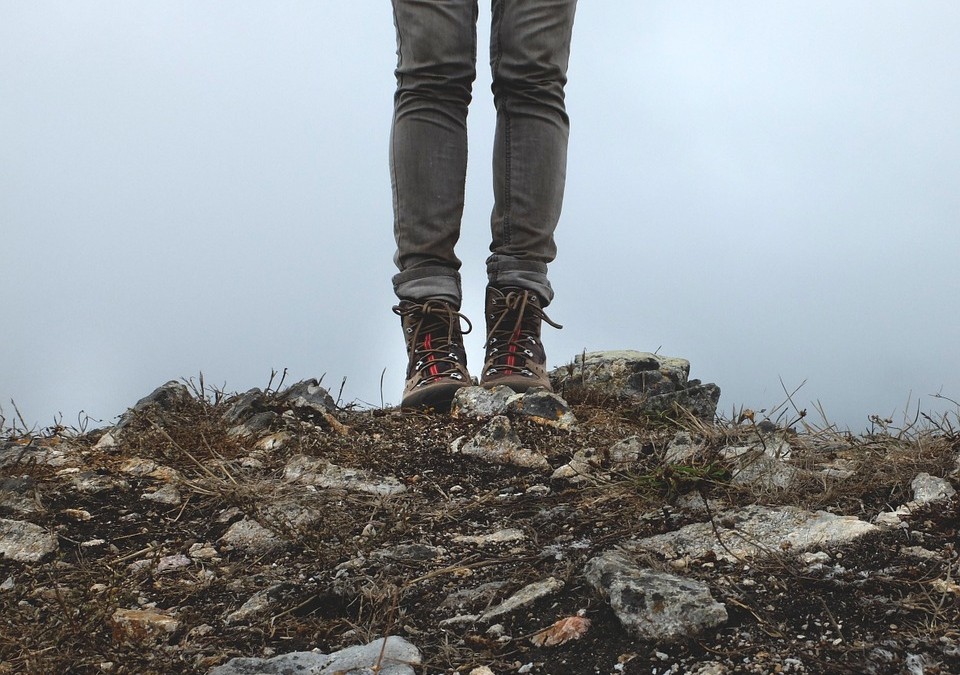
by MakeYourOwnJeans | jeans |
Since their origins back in the 1800s, jeans have been made almost exclusively using denim. Whether you’re shopping for a pair of straight-leg jeans or relaxed-fit jeans, you’ll probably discover that they are made of 100% denim. It’s the “go to” material for companies that produce jeans. Unless you’re familiar with denim, though, you might be wondering why it’s used to make jeans. Overview of Denim: What You Should Know To better understand why denim is used to make jeans, you must first familiarize yourself with the material itself. Contrary to what some people believe, denim isn’t a specific type of fabric, such as wool. Rather, it’s a form of cotton that’s characterized by a unique design in which the weft goes under multiple warp threads. The end result is a twill weaving pattern consisting of diagonal stitching. Denim Is Sturdy and Durable Even though it’s technically cotton, denim is a sturdy and durable material that’s able to withstand significant stress without ripping, tearing or otherwise sustaining damage. When jeans were first invented, they were designed for hardworking men and women in laborious jobs, including gold prospectors who spent countless hours panning and mining for gold. As a result, companies needed to produce jeans using a strong material. With its twill weaving construction, denim was the perfect material for the job. Companies discovered that denim jeans offered a superior level of strength and durability when compared to conventional textiles. Consumers could wear denim jeans while working in laborious jobs, and unlike with other pants, jeans wouldn’t tear or sustain damage due to their sturdy and durable construction. Denim Is...
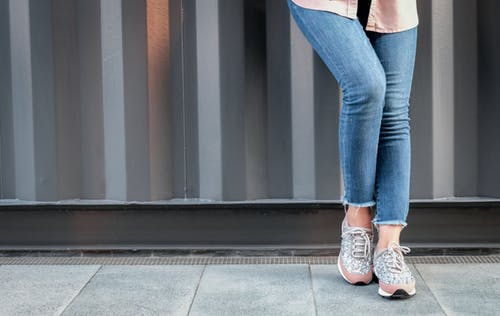
by MakeYourOwnJeans | jeans |
If you’re like most people, you probably wear jeans on a regular basis. One study found that the average American woman owns seven pairs of jeans. Of course, men wear jeans just as frequently — if not more frequently — than women. Their classic style combined with a superior level of durability makes them an excellent all-around choice of pants. Even if you wear denim jeans on a regular basis, though, there are probably some things you don’t know about this classic garment. Most jeans, for example, are designed with a “yoke.” Unless you’re familiar with the term, you might be wondering what a yoke is and why it’s included in jeans. In this post, we’re going to take a closer look at the yoke on denim jeans. Overview of the Yoke No, the yoke isn’t part of an egg (that’s the yolk). Rather, it’s a pattern of fabric found on the back of jeans that’s used to enhance the jeans’ appearance when worn. Not all jeans have yokes. Some are designed with a plain back. If you inspect the back of denim jeans the next time you go shopping, however, you’ll probably discover that most jeans have a yoke. The yoke doesn’t offer any functional purposes; it’s used strictly for aesthetic purposes. When adding to a pair of jeans, it can complement the wearer’s body to create a more attractive look. How to Find the Yoke To find the yoke on a pair of denim jeans, flip the jeans over and look at the area directly below the waistband. Assuming the jeans have a yoke, you should see...
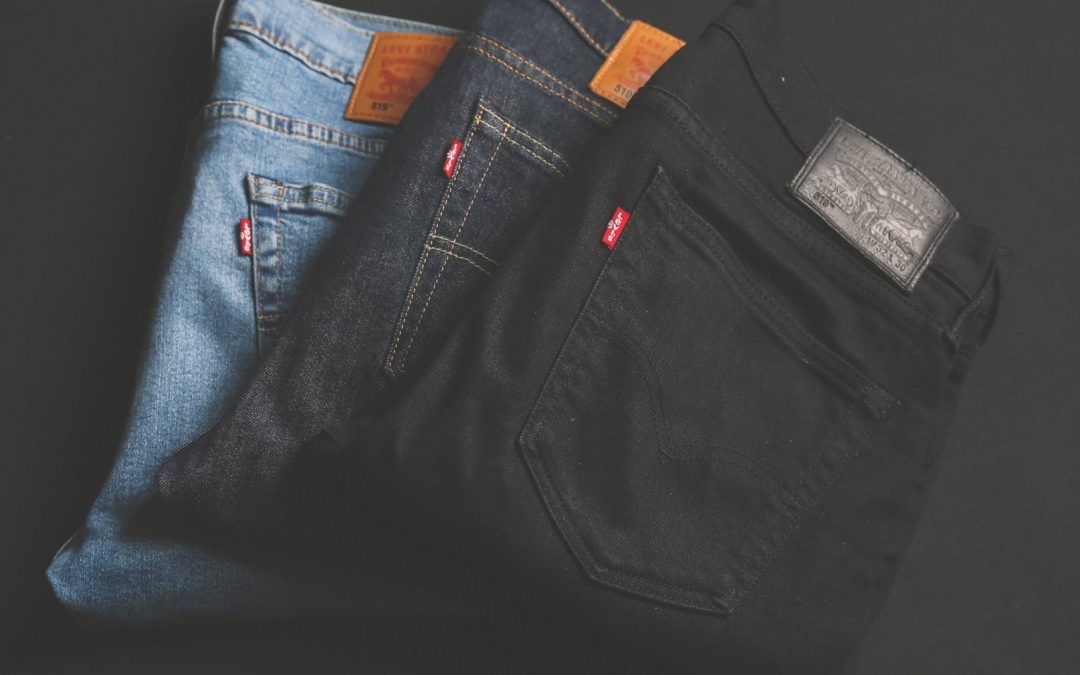
by MakeYourOwnJeans | jeans |
Not all jeans feature the same traditional light blue color. While light blue is arguably one of the most popular — if not, the most popular — colors in which denim jeans are made, you can find this classic garment available in dozens of other colors, including light and dark colors. If you’re looking to upgrade your wardrobe with a new pair of denim jeans, you need to choose the right color. Neglecting to choose a stylish, versatile color will only restrict your ability to wear them. To make the process a little easier, we’ve compiled a list of seven awesome colors for denim jeans, which should set you in the right direction. #1) Light Blue Let’s go ahead and get the most common color out of the way: light blue. When jeans were first invented over a century, they were made almost entirely in a light blue color. It’s an attractive, simple color that looks great no matter how it’s worn. Of course, there are different shades of light blue in which jeans are made, so choose a shade to match your personal style and preference. #2) Indigo For a more formal appearance — though still casual — you can choose denim jeans in an indigo color. Indigo is technically a type of blue, but it’s significantly darker than traditional light blue colors. And because of its darker tone, indigo is considered more formal than its light blue counterpart, making indigo jeans an excellent choice for semi-formal occasions in which traditional light blue jeans are too casual yet a suit is too formal. When in doubt, you can’t...

by MakeYourOwnJeans | jeans |
Have you noticed some of the dye from your jeans bleeding onto your shoes? Well, you aren’t alone. Countless men and women experience this very same problem. When their wear their favorite pair of jeans, they discover that it changes the color of their shoes. If you wear indigo jeans with white shoes, for example, it may turn your shoes to a bluish color. Not only is this frustrating, but it can cost you serious money when you’re forced to replace the discolored shoes. To prevent this from happening, though, you must first understand what causes it. Dye Is Released From the Jeans The reason your jeans are staining your shoes is because they’ve released some of their dye. Whether it’s a pair of skinny, straight-leg, boot-cut, high-rise, boyfriend or stretch, all jeans are processed with dye. Dye is responsible for giving the denim its color. Without it, denim would simply be white because it’s a type of cotton, which itself is white. Dye doesn’t always stay locked inside the denim fabric, however. In many cases, it may leach out, allowing it to reach other garments or accessories like your shoes. As your jeans release some of their dye, the colored liquid will travel down your pant legs before reaching your shoes. And being that most types are shoes are made of leather, their porous nature will naturally absorb some of this dye, thereby changing their color to reflect that of your jeans. Choose High-Quality Denim Jeans There are a few steps you can take to prevent your jeans from bleeding onto your shoes, one of which is to...







